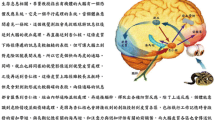Abstract
The focus of this study is investigating efficiency of coding and grouping methods in reducing split attention effect in scientific graphs and diagrams by applying local changes in the structure of scientific materials. The diagrams and graphs are regularly used in the structure of materials along with textual explanation to provide supplementary information and insight to the readers and is referred as redundancy principle. In some cases, the redundant presentation of visual and textual content could lead to split attention effect and cognitive overload. Although, multimedia learning theory claims that in order to enhance learning, information should be presented in multi-mode format the design and implementation of the multi-modal presentation is of great importance. Having incredible flexibility, if multimedia elements are not applied properly, they cause confusion and adversely affect comprehension of the readers.
Access this chapter
Tax calculation will be finalised at checkout
Purchases are for personal use only
Similar content being viewed by others
References
Ginns, P.: Meta-analysis of the modality effect (2005)
Mayer, R.E., Moreno, R.: Nine ways to reduce cognitive load in multimedia learning. Educ. Psychol. 38, 43–52 (2003)
Carney, R.N., Levin, J.R.: Pictorial illustrations still improve students’ learning from text. Educ. Psychol. Rev. 14, 5–26 (2002)
Mayer, R.E., Steinhoff, K., Bower, G., Mars, R.: A generative theory of textbook design: using annotated illustrations to foster meaningful learning of science text. Educ. Technol. Res. Dev. 43, 31–41 (1995)
Ayres, P., Sweller, J.: The split-attention principle in multimedia learning. In: The Cambridge Handbook of Multimedia Learning, pp. 134–146. Cambridge University Press, Cambridge (2005)
Owens, P., Sweller, J.: Cognitive load theory and music instruction. Educ. Psychol. 28, 29–45 (2008)
Tarmizi, R., Sweller, J.: Guidance during mathematical problem solving. J. Educ. Psychol. 80, 424–436 (1988)
Chandler, P., Sweller, J.: The split-attention effect as a factor in the design of instruction. Br. J. Educ. Psychol. 62, 233–246 (1992)
Florax, M., Ploetzner, R.: What contributes to the split-attention effect? The role of text segmentation, picture labelling, and spatial proximity. Learn. Instr. 20, 216–224 (2010)
Liu, T.C., Lin, Y.C., Tsai, M.J., Paas, F.: Split-attention and redundancy effects on mobile learning in physical environments. Comput. Educ. 58, 172–180 (2012)
Tindall-Ford, S., Agostinho, S., Bokosmaty, S., Paas, F., Chandler, P.: Computer-based learning of geometry from integrated and split-attention worked examples: the power of self-management. Educ. Technol. Soc. 18, 89–99 (2015)
Majooni, A., Masood, M., Akhavan, A.: Scientific visualizations based on integrated model of text and picture comprehension via eye-tracking. Procedia Soc. Behav. Sci. 176, 52–59 (2015)
Kahneman, D., Beatty, J.: Pupil diameter and load on memory. Science 154, 1583–1585 (1966)
Klingner, J., Kumar, R., Hanrahan, P.: Measuring the task-evoked pupillary response with a remote eye tracker. In: Proceedings of the 2008 Symposium on Eye Tracking Research and Applications (2008)
Di Stasi, L.L., Antolí, A., Cañas, J.J.: Evaluating mental workload while interacting with computer-generated artificial environments. Entertain. Comput. 4, 63–69 (2013)
Iqbal, S., Adamczyk, P.: Towards an index of opportunity: understanding changes in mental workload during task execution. In: Proceedings of the SIGCHI Conference on Human Factors in Computing Systems, pp. 311–320 (2005)
Stern, J.A., Boyer, D., Schroeder, D.: Blink rate: a possible measure of fatigue. Hum. Factors. 36, 285–297 (1994)
Fukuda, K., Stern, J., Brown, T., Russo, M.: Cognition, blinks, eye-movements, and pupillary movements during performance of a running memory task. Aviat. Sp. Environ. Med. 76, 75–85 (2005)
Benedetto, S., Pedrotti, M., Minin, L., Baccino, T., Re, A., Montanari, R.: Driver workload and eye blink duration. Transp. Res. Part F Traffic Psychol. Behav. 14, 199–208 (2011)
Recarte, M.A., Pérez, E., Conchillo, A., Nunes, L.M.: Mental workload and visual impairment: differences between pupil, blink, and subjective rating. Span. J. Psychol. 11, 374–385 (2008)
Acknowledgments
This research is supported by Universiti Sains Malaysia, Centre of Instructional Technology and Multimedia (Grant No 1001/PMEDIA/817072).
Author information
Authors and Affiliations
Corresponding author
Editor information
Editors and Affiliations
Rights and permissions
Copyright information
© 2016 Springer International Publishing Switzerland
About this paper
Cite this paper
Majooni, A., Masood, M., Akhavan, A. (2016). An Eye Tracking Experiment on Strategies to Minimize the Redundancy and Split Attention Effects in Scientific Graphs and Diagrams. In: Di Bucchianico, G., Kercher, P. (eds) Advances in Design for Inclusion. Advances in Intelligent Systems and Computing, vol 500. Springer, Cham. https://doi.org/10.1007/978-3-319-41962-6_47
Download citation
DOI: https://doi.org/10.1007/978-3-319-41962-6_47
Published:
Publisher Name: Springer, Cham
Print ISBN: 978-3-319-41961-9
Online ISBN: 978-3-319-41962-6
eBook Packages: EngineeringEngineering (R0)




